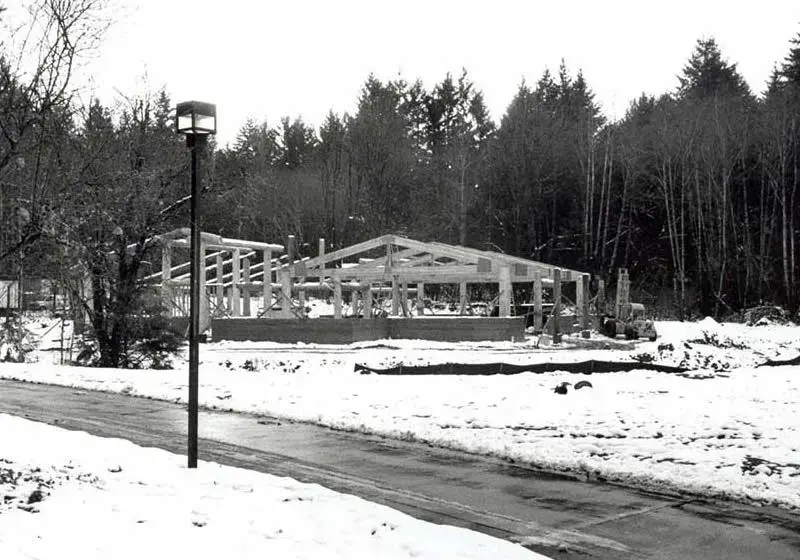Evergreen's Longhouse
Origins and Construction
Evergreen's Native programs began in 1972 when faculty member Mary Ellen Hillaire of the Lummi Tribe founded the Native American Studies program. Hillaire is also credited with having first articulated the need to have a culturally appropriate facility—such as a longhouse—on campus so that people from different cultural backgrounds could teach and learn with each other. Her vision for a public gathering space influenced students in the Master of Public Administration Program to write their thesis exploring issues relating to the creation of a longhouse at Evergreen. Colleen Jollie, longhouse project coordinator, oversaw the project to its completion.
Many people and Tribes contributed to the construction of the House of Welcome, which was completed in 1995. Past graduating classes of Evergreen students designated a portion of their fees to go toward the creation of the welcome figures for the entrance to the House of Welcome. The Quinault Indian Nation donated much of the timber used in the building; the Burke Museum donated cedar shakes and posts from the Sea Monster House (a model longhouse that was part of the 1962 World's Fair in Seattle); the Squaxin Island Tribe held fundraising dinners; the Makah and Skokomish Tribes provided cultural and spiritual leadership; and the Washington State Legislature allocated $2.2 million for the construction of the building.
The building opened with over 1,000 people in attendance, including Governor Mike Lowry, and many Tribal dignitaries. The inaugural year of the Longhouse coincided with the first year of the Daniel J. Evans Scholar program, which brought five Native American scholars to campus: Hazel Pete of Chehalis, John Hottowe of Makah, Billy Frank Jr. of Nisqually, and Buffy St. Marie of Cree. In 1997, it received its name "s'gʷi gʷi ʔ altxʷ, which means House of Welcome, from Vi Hilbert of Upper Skagit, Bruce Miller of Skokomish, Pauline Hillaire of Lummi, John and Edie Hottowe of Makah, Hazel Pete of Chehalis and David Whitener of Squaxin Island.

